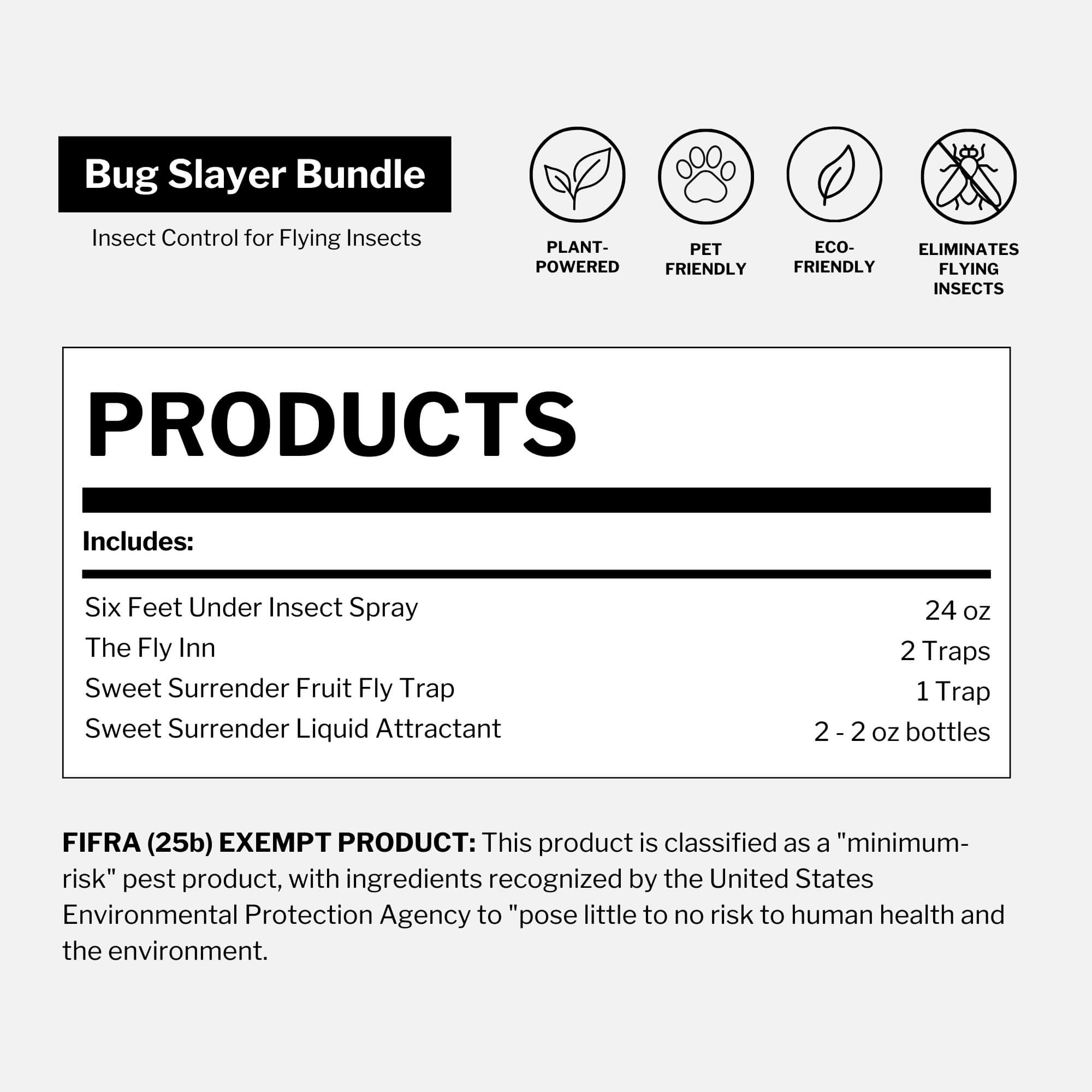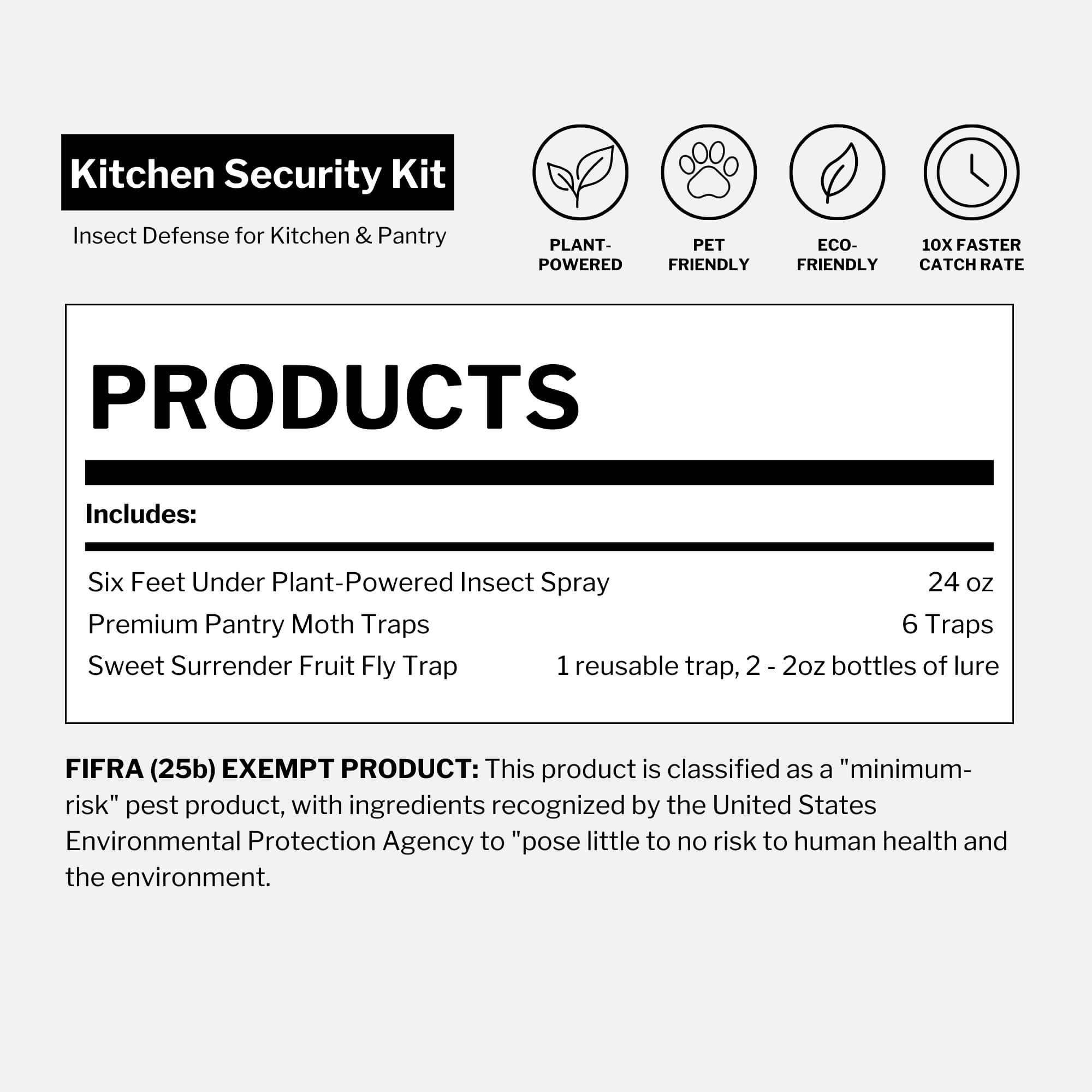Updated on March 24th, 2025
Fruit flies: those tiny, relentless intruders that seem to appear out of nowhere and multiply overnight. Many turn to the classic vinegar trap—just a bowl of vinegar and the hope of sweet revenge. But does it actually work? Or is it just catching a few while the rest keep breeding and taking over your kitchen?
Today, we’ll peel back the truth on vinegar traps—and uncover what really works when it comes to stopping fruit flies in their tracks.
Why fruit flies love fermentation (and how vinegar takes advantage)
Vinegar—especially apple cider vinegar—is famously irresistible to fruit flies. But why is it such an effective lure? Let’s explore five reasons behind its powerful pull:

1. From apple to attractant
It all starts with apples. They’re crushed for juice, then fermented—first by yeast (either naturally present or added), which turns sugars into alcohol. Then acetic acid bacteria in the air convert that alcohol into acetic acid, giving vinegar its strong, sour smell.
To a fruit fly, that scent is pure gold—mimicking rotting fruit and signaling an all-you-can-eat buffet and the perfect place to lay eggs.
2. A scent that never fades
Unlike actual fruit, which ripens, rots and changes over time, apple cider vinegar holds steady. Its consistent scent keeps broadcasting those fermented signals for days—making it an always-on lure. Fruit flies don’t just stumble upon it once—they keep coming back.
3. Lightning-fast detection, even from afar

Fruit flies have an uncanny ability to detect fermentation within hours—sometimes even minutes after it begins. Their antennae have finely tuned olfactory receptors that can pick up trace amounts of alcohol and acetic acid in the air. These scent signals act like beacons, guiding them to ripening or fermenting fruit—even from several meters away.
That’s why you might spot fruit flies hovering near a banana or tomato that seemed perfectly fine yesterday. To them, even the faintest whiff of fermentation signals food and a prime place to lay eggs.
4. From one to many: How fruit flies call in reinforcements
These insects are not solitary diners; instead, they employ a form of communal alert, using pheromones to beckon their kin to join the feast. This social behavior explains why encountering one fruit fly often means there are more on the way, turning a lone invader into a full-scale invasion.
5. Nature’s bait, vinegar’s trap—but not the whole fix

Fermenting fruits are nature’s lure, and vinegar replicates that scent with uncanny accuracy. But while it draws fruit flies in, it doesn’t eliminate them entirely. That’s the catch: vinegar is an attractant—not a complete solution.
Understanding this distinction is key. Vinegar is a useful tool in your pest control toolkit, but without a reliable trap paired with a powerful attractant, you’re only scratching the surface of the problem.
Transitioning from vinegar to comprehensive control
While we tip our hats to vinegar for its attractive prowess, let's not overlook its limitations. Vinegar may draw adult fruit flies, but it often falls short of delivering consistent, long-term results. It lures—yes—but trapping can be hit or miss and the problem persists.
For a more reliable approach, Dr. Killigan’s Sweet Surrender Fruit Fly Trap offers a lab-tested, reusable design paired with a proprietary attractant. It draws fruit flies in and captures them effectively—helping to significantly reduce the adult population in your home. When used alongside smart sanitation and targeted cleaning (we’ll cover those next), it becomes a vital tool in your fight against infestation.
Smart cleaning: Stop fruit flies before they start
Sweet Surrender can dramatically reduce adult populations—but to truly stop an infestation, you’ll need to eliminate their breeding grounds too. That means:
- Toss overripe or damaged fruit immediately
- Clean drains with boiling water to kill lingering eggs and larvae
- Wipe up spills and dry out sponges or damp cloths
- Empty and clean trash cans regularly
A simple cleanup routine goes a long way toward keeping fruit flies from coming back.
Dr. Killigan’s Sweet Surrender: Completing vinegar’s attraction with nature’s best
Recognizing the limitations of vinegar alone, Dr. Killigan's Sweet Surrender Fruit Fly Trap offers a more comprehensive approach. It harnesses vinegar's natural attraction and amplifies it with a proprietary, plant-based liquid formula. Composed of 0.3% plant-based sodium lauryl sulfate and 99.7% water, vinegar, sucrose and citric acid, this blend forms an irresistible lure for fruit flies.

- Plant-based sodium lauryl sulfate: A gentle surfactant that breaks surface tension, ensuring flies can't escape once they land.
- Vinegar: The primary attractant, delivering the fermentation scent fruit flies can't resist.
- Water: Balances the mixture, keeping the formula effective without being overpowering.
- Sucrose: Adds sweetness to simulate the sugar-rich environment of overripe fruit.
-
Citric acid: Enhances the mixture’s acidity, further replicating fermenting produce.
Crafted for durability and reuse, our trap is an eco-friendly solution made from recyclable PET and PP plastics. Its sleek jar features a transparent label with a discreet fill line, so you can easily track progress without removing the lid. The knurled edge makes the trap easy to open and reseal, while 32 precision-cut entrance holes boost capture rates and reduce odors and spills. Compared to an open bowl, the enclosed design slows evaporation by 63%—keeping the attractant effective longer and your space fruit-fly free.
Conclusion: A balanced approach to fruit fly control

Vinegar proves itself a worthy ally in attracting fruit flies, but it falls short of delivering the coup de grâce. The combination of vinegar’s natural attraction with the trapping prowess of Sweet Surrender offers a strategy that is balanced and effective.
Disclaimer: Identifying your pest correctly
While Dr. Killigan's Sweet Surrender is designed to effectively attract and trap fruit flies, it's crucial to ensure that you are indeed dealing with fruit flies. If you find that the trap isn't attracting your flying nuisances, you might be facing a different pest problem, such as gnats or phorid flies. Each of these insects requires a specific approach for effective control.
For more clarity on these pests, check out:
- Fruit flies vs. gnats: What’s the difference
- Phorid flies vs. fruit flies: Key differences and how to deal with them




















